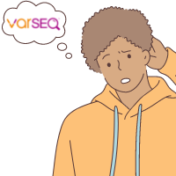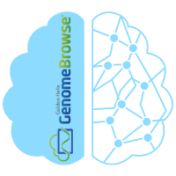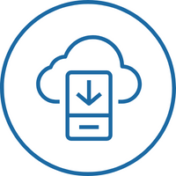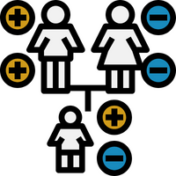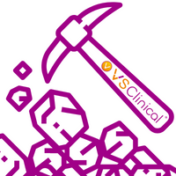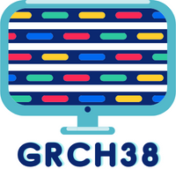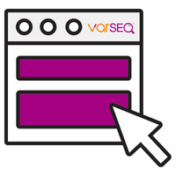It’s everyone’s favorite time of the year; Golden Helix’s Annual T-Shirt Design Competition is starting! If you’d like to participate, simply visit goldenhelix.com/t-shirt-contest and submit a sketch of your design! Don’t forget about the sweet prizes we’re handing out for the top three designs: First Place: $300 Second Place: $200 Third Place: $100 Deadline: September 14, 2022 How It Works… Read more »
Large-scale next-generation sequencing studies are becoming increasingly popular clinical and research tools. One enduring challenge for interpretion of these large amounts of data has been predicting the functional impact of genetic variants. Access to efficient computational tools for predicting the functional impact of variants is crucial to prioritizing the most potentially relevant variants in a dataset in a time-efficient manner…. Read more »
Manually converting FASTQs to VCFs, importing these into VarSeq, and building projects from scratch is adequate when you have only a handful of cases per week. But as you start ramping up production, the key to your lab’s success quickly becomes how quickly and efficiently you can get to the reporting of your analysis. This blog will explain how you… Read more »
July brought about several customers having success with utilizing our VarSeq software. We saw publicized research regarding Axenfield-Reiger syndrome, Septo-Optic Dysplasia, and association of TGFBI variants. This range of customer usage displays the vast capabilities of VarSeq and the applications it can work with. Axenfeld-Rieger syndrome: more than meets the eye Background: Axenfeld-Rieger syndrome (ARS) is characterised by typical anterior segment… Read more »
Let’s say you are the director of a large lab, which is running tens or hundreds of standard NGS sample analyses per week. You have a number of employees with varying levels of analysis background, and you want to be sure everyone is running the analysis the same way. You are also concerned about updating catalogs that could create differences… Read more »
First, thank you to everyone who joined us for our recent webcast, Handling a Variety of CNV Caller Inputs with VarSeq. Also, we would like to thank those that Tweeted #CNVsupport @GoldenHelix or emailed us (mmarks@goldenhelix.com) to throw in their questions. This was a successful trial run, and we would like to continue engaging with our users through these outlets…. Read more »
Genomic data visualization is an extremely powerful means to help users comprehend massive amounts of sequencing data and is valuable for communicating genomic information and findings. Genome browser tools allow users to visualize aligned sequence data in BAM format, map the data to a reference assembly, view annotation tracks, genomic region tracks, export graphics for sharing, and much more. Genome… Read more »
Below is a list of highlighted peer-reviewed publications from this month. The Golden Helix team consistently enjoys seeing our software applications hard at work in the field, whether it is clinical whole-exome sequencing, targeted CNV identification, or genotype-phenotype correlations. Enjoy reading below how our suite of VarSeq, VSClinical, and VS-CNV continues to contribute to the progression of genetics research. Looking… Read more »
The Golden Helix team just returned from ESHG 2022 in Vienna, Austria. It was a great opportunity to speak with colleagues, customers, and partners face-to-face which many of us greatly missed. It has been three years since the last ESHG occurred in this format. Here are three takeaways from this year’s show: Strong bias to action: Some NGS initiatives that… Read more »
Oftentimes, the endpoint of a clinical variant analysis is a standardized, clinical report. As such, we ship a number of default templates with VSClinical for users to report their findings. But these templates are just a starting point! Our platform allows users to fully customize their reports to adhere to lab-specific preferences. We have shared a plethora of how-to’s on… Read more »
As we look back on May, I wanted to highlight a range of applications that our VarSeq suite is capable of and show the success of our partners. In these publications, our VarSeq suite is utilized for the analysis of whole-exome, clinical variant classification and association, and assisting in an NGS panel for clinical oncology use. VarSeq’s range and capability… Read more »
Advances in high-throughput sequencing have allowed us to be able to detect structural variants such as copy number variants in addition to small variants such as SNVs and indels. We provide users with an industry-leading CNV calling algorithm to detect CNVs directly from their next-generation sequencing data including whole genome, whole exome, and gene panel datasets, and also import CNVs… Read more »
In the era where cloud-based solutions are the default for the modern office, it may not be obvious why many laboratories and testing centers choose to host their data and analysis pipelines on-premises or on self-managed cloud services. In the recent webcast Evaluating Cloud vs On-Premises for NGS Clinical Workflows, I explored the topic of how to make infrastructure decisions… Read more »
The overall objective of Trio Analysis is to leverage inheritance data to determine the ancestry of variants in the proband, whether that be through transmission from the mother and father, or of de novo origin. We have previously covered family based analysis in this blog post and this webcast, but both of these sources have been based on variants brought… Read more »
While the interpretation of germline variants generally focuses on the pathogenicity of a variant for a specific disease, the interpretation of somatic variants is centered around each variant’s impact on clinical care. As a result, clinical trials play an important role in assessing the clinical significance of somatic biomarkers, with the AMP Guidelines assigning a higher level of evidence to… Read more »
Curated databases are a real time saver when compiling published evidence to support your variant evaluations and classifications. Leveraging the curated databases at your fingertips in our VSClinical variant interpretation hub is even more efficient. Not only does VSClinical provides users with automated variant classification for germline variants according to the ACMG guidelines and somatic variants according to the AMP… Read more »
For this month’s Customer Success blog, I decided to revisit some of my favorite studies that had previously been featured in years past. At the time we first highlighted the below publications, some of them were in pre-print and have since been accepted and published. What they all have in common is the implementation of our VSClinical software, which saved… Read more »
An under-utilized use of VarSeq is the ability of mining raw variant data in GenomeBrowse for relevant literature. By bringing in various public and private annotation sources, GenomeBrowse allows the user to interface with raw variant data in a compressed and manageable view. This blog will show you how to leverage these sources to power up your search for variant… Read more »
I’d like to take a moment to announce the release of updated gene tracks for the GRCh38 genome assembly! Gene annotation tracks are essential to all VarSeq projects and workflows. Whether your favorite gene track is Ensembl or RefSeq, both sources have been updated and released and can be used for variant annotation. These gene tracks are used to annotate… Read more »
When doing next-generation sequencing (NGS) analysis in VarSeq, the fundamental goal is to develop efficient ways to filter through your NGS data. If you are just getting started with Varseq, a pre-designed project template can really come in handy for variant filtering! This blog series will cover a number of template design recommendations for variant filtering on data types ranging… Read more »




